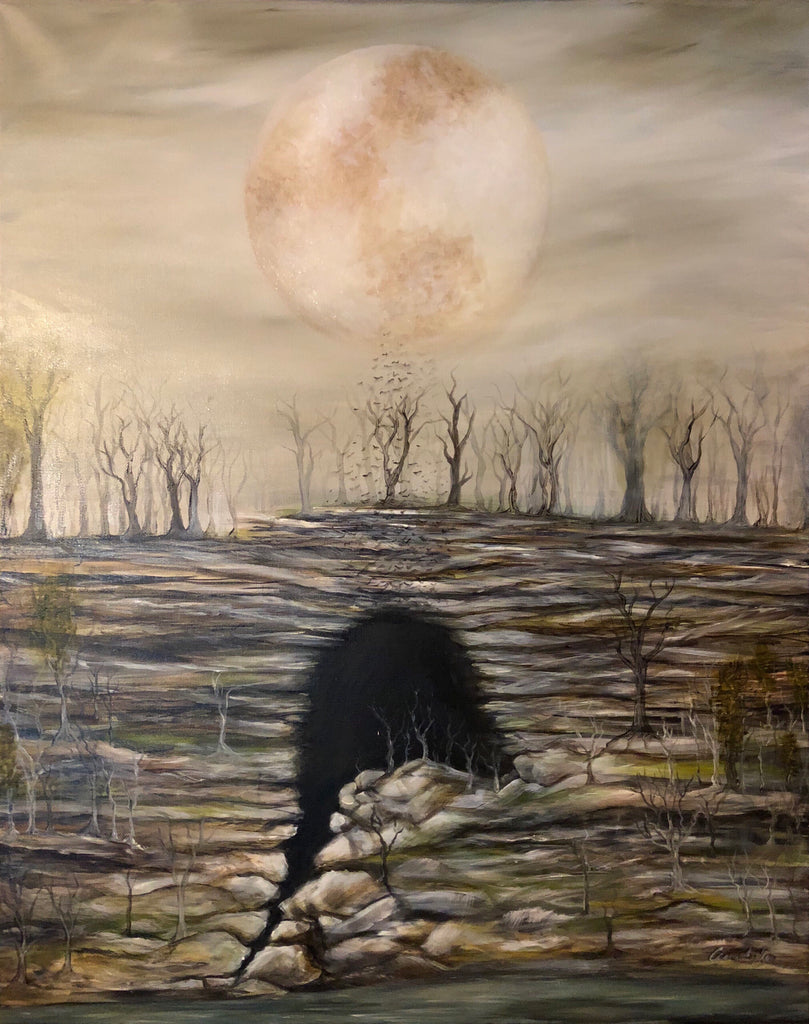
Moon Over Jam Up Cave
$ 825.00
The geographical diversity of Missouri is a surprise to the rest of America, we have surprisingly high populations of rare and endangered species and beautiful and historic caves hiding ancient secrets. One of these is Jam Up Cave.
From the Missouri Dept of Conservation: “Steep valley walls and cliffs loom up to 200 feet above the Jacks Fork here with ancient eastern red cedars growing from cliff ledges. Along the steep slopes and cliffs grow an assemblage of rare plants found nowhere else in the state. Plants such as harebell are considered “glacial relict” plant species. These plants are normally found in more northern states. They were more common in Missouri 12,000 years ago. Today these plants survive in the cool microclimate of these steep north facing cliffs. Over 450 native plant species occur on the natural area!
The geologic features of this natural area are striking. The most amazing being Jam Up Cave. The entrance of Jam Up Cave is visible from the river and forms an arch 80 feet high by 100 feet wide. Huge dolomite boulders form a talus slope below the entrance. Technically this geological feature is a natural tunnel, not a cave. Jam Up Creek flows into this natural tunnel through a narrow sinkhole. Jacks Fork River is named after John Jacks, a Shawnee Indian, who settled near the headwaters of this river in the 1830s.”
Touring the inside of the cave is currently prohibited due to a disease harming the bats living in the cave which is spread by visitors.
From the Missouri Dept of Conservation: “Steep valley walls and cliffs loom up to 200 feet above the Jacks Fork here with ancient eastern red cedars growing from cliff ledges. Along the steep slopes and cliffs grow an assemblage of rare plants found nowhere else in the state. Plants such as harebell are considered “glacial relict” plant species. These plants are normally found in more northern states. They were more common in Missouri 12,000 years ago. Today these plants survive in the cool microclimate of these steep north facing cliffs. Over 450 native plant species occur on the natural area!
The geologic features of this natural area are striking. The most amazing being Jam Up Cave. The entrance of Jam Up Cave is visible from the river and forms an arch 80 feet high by 100 feet wide. Huge dolomite boulders form a talus slope below the entrance. Technically this geological feature is a natural tunnel, not a cave. Jam Up Creek flows into this natural tunnel through a narrow sinkhole. Jacks Fork River is named after John Jacks, a Shawnee Indian, who settled near the headwaters of this river in the 1830s.”
Touring the inside of the cave is currently prohibited due to a disease harming the bats living in the cave which is spread by visitors.



